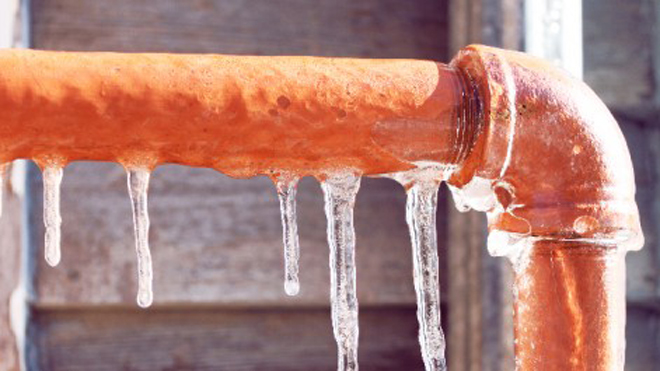Preventing Frozen Plumbing in Winter: Expert Tips
Preventing Frozen Plumbing in Winter: Expert Tips
Blog Article
Have you been hunting for facts and techniques on How To Avoid Freezing Pipes?

Cold weather can damage your plumbing, specifically by freezing pipes. Right here's exactly how to stop it from taking place and what to do if it does.
Introduction
As temperatures decline, the threat of icy pipes increases, potentially causing expensive fixings and water damages. Understanding exactly how to prevent icy pipelines is essential for property owners in cold climates.
Understanding Icy Pipelines
What triggers pipelines to freeze?
Pipelines ice up when exposed to temperature levels listed below 32 ° F (0 ° C) for expanded durations. As water inside the pipes freezes, it broadens, putting pressure on the pipeline wall surfaces and possibly creating them to rupture.
Dangers and damages
Frozen pipes can bring about water interruptions, property damages, and costly repair work. Burst pipelines can flooding homes and create extensive structural damages.
Indicators of Frozen Pipes
Identifying frozen pipelines early can avoid them from breaking.
Just how to recognize icy pipelines
Seek lowered water circulation from faucets, unusual smells or noises from pipelines, and visible frost on subjected pipes.
Prevention Tips
Protecting susceptible pipelines
Cover pipes in insulation sleeves or use warmth tape to safeguard them from freezing temperatures. Concentrate on pipes in unheated or outside locations of the home.
Heating methods
Maintain interior spaces effectively heated up, specifically locations with plumbing. Open up cabinet doors to permit warm air to flow around pipelines under sinks.
Safeguarding Outside Plumbing
Garden hose pipes and exterior taps
Separate and drain yard pipes prior to winter season. Set up frost-proof faucets or cover outside faucets with insulated caps.
What to Do If Your Pipes Freeze
Immediate actions to take
If you presume frozen pipelines, keep taps open up to soothe stress as the ice melts. Use a hairdryer or towels soaked in warm water to thaw pipelines slowly.
Long-Term Solutions
Structural adjustments
Take into consideration rerouting pipelines away from exterior wall surfaces or unheated areas. Include extra insulation to attic rooms, cellars, and crawl spaces.
Updating insulation
Invest in high-grade insulation for pipes, attic rooms, and wall surfaces. Correct insulation helps keep consistent temperature levels and minimizes the risk of icy pipes.
Final thought
Avoiding icy pipes calls for proactive measures and quick responses. By recognizing the reasons, indicators, and safety nets, home owners can safeguard their pipes throughout winter.
5 Ways to Prevent Frozen Pipes
Drain Outdoor Faucets and Disconnect Hoses
First, close the shut-off valve that controls the flow of water in the pipe to your outdoor faucet. Then, head outside to disconnect and drain your hose and open the outdoor faucet to allow the water to completely drain out of the line. Turn off the faucet when done. Finally, head back to the shut-off valve and drain the remaining water inside the pipe into a bucket or container. Additionally, if you have a home irrigation system, you should consider hiring an expert to clear the system of water each year.
Insulate Pipes
One of the best and most cost-effective methods for preventing frozen water pipes is to wrap your pipes with insulation. This is especially important for areas in your home that aren’t exposed to heat, such as an attic. We suggest using foam sleeves, which can typically be found at your local hardware store.
Keep Heat Running at 65
Your pipes are located inside your walls, and the temperature there is much colder than the rest of the house. To prevent your pipes from freezing, The Insurance Information Institute suggests that you keep your home heated to at least 65 degrees, even when traveling. You may want to invest in smart devices that can keep an eye on the temperature in your home while you’re away.
Leave Water Dripping
Moving water — even a small trickle — can prevent ice from forming inside your pipes. When freezing temps are imminent, start a drip of water from all faucets that serve exposed pipes. Leaving a few faucets running will also help relieve pressure inside the pipes and help prevent a rupture if the water inside freezes.
Open Cupboard Doors
Warm your kitchen and bathroom pipes by opening cupboards and vanities. You should also leave your interior doors ajar to help warm air circulate evenly throughout your home.

I have been very involved in How to Prevent Your Pipes From Freezing and I am hoping you enjoyed the entire entry. Sharing is good. You won't know, you might be helping someone out. We love reading our article about 6 Ways to Prevent Frozen Pipes.
Visit Link Report this page